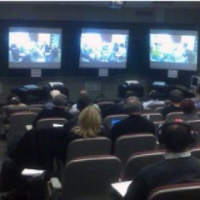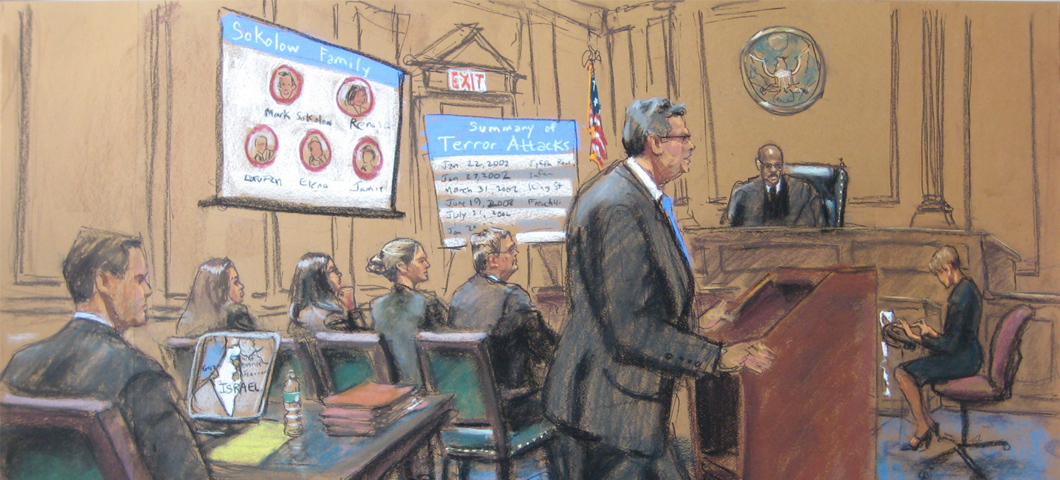Mastering Trial Presentation: Tips for Engaging and Persuasive Court Techniques
In the realm of trial discussion, the ability to engage and persuade is paramount. The difficulty exists in perfectly incorporating them into a cohesive presentation. What techniques can truly boost a test presentation from normal to outstanding?
Recognizing Your Target Market
To successfully grasp trial discussion, it is important to comprehend your target market. Comprehending their demographics, histories, and possible biases can aid customize your discussion to reverberate with them properly.

An awareness of the judge's choices and court room etiquette is just as crucial, as it can affect the flow of your presentation. Juries might focus on brevity and quality, so offering your instance in a straightforward manner can boost your reputation. In addition, identifying the rival counsel's strategies can assist in preparing counterarguments that effectively address their factors.
Ultimately, understanding your target market allows you to involve them better, cultivating connection and persuasion throughout the trial (trial presentation). By leveraging understandings concerning their motivations and assumptions, you can produce an engaging discussion that resonates and ultimately affects the outcome of the situation. This foundational understanding is essential for any kind of lawyer intending to accomplish success in the court room
Crafting a Compelling Narrative
A well-crafted story works as the backbone of a reliable trial presentation, directing the target market with the intricacies of the instance. This story should be structured to involve jurors mentally and intellectually, making the facts relatable and reasonable. By weaving together the components of the case-- such as the timeline, key events, and pivotal testimonies-- lawyers can develop a systematic story that resonates with jurors.
To attain this, it is essential to determine the central styles that will drive the narrative. Attorneys ought to concentrate on the motivations and goals of the events involved, highlighting the human elements of the instance (trial presentation). This approach not just maintains juror passion however likewise promotes empathy, leading them to connect personally with the narrative
Additionally, the use of clear and succinct language is crucial. Staying clear of legal lingo allows the target market to understand the crucial points without complication. Each sector of the story should construct toward a compelling climax, culminating in a convincing verdict that strengthens the instance's core message. Ultimately, a solid narrative not just clears up the problems handy but likewise produces an enduring impact that can influence the result of the test.
Making Use Of Visual Aids Successfully
Exactly how can visual help boost the performance of a test presentation? Visual help visit the website act as effective tools that can substantially enhance juror understanding and retention of complex information - trial presentation. When used attentively, they can clear up essential points, illustrate relationships, and stress visit homepage critical proof that sustains the instance story
Effective visual help consist of charts, graphs, timelines, and pictures, which can simplify elaborate data and give context. A timeline can succinctly share the sequence of events, while a graph can highlight analytical information in an aesthetically interesting fashion. The calculated use multimedia presentations can likewise improve engagement and maintain juror interest throughout the trial.
Moreover, aesthetic help can help to evoke emotional actions, reinforcing the human aspects of a case. By providing pictures or videos appropriate to the instance, attorneys can develop an extra compelling and relatable narrative. It is essential to guarantee that visual help are properly designed and not extremely intricate, as this can lead to complication rather than quality.
Engaging Body Language Techniques
Visual aids are not the only tools that can boost the efficiency of a trial discussion; engaging body movement methods also play an important function in catching juror interest and sharing confidence. A presenter's nonverbal signs can considerably influence jurors' assumptions and responses, making it vital to master these methods.

In addition, varying your vocal tone and recommended you read pace can improve your narration, making it a lot more engaging. Stopping purposefully permits jurors to soak up vital info and indicates the relevance of what you are saying. Finally, moving actively within the court can assist reinforce your points, offered it does not sidetrack from your message.
Incorporating these body language methods will certainly not just boost your courtroom visibility but likewise cultivate an even more persuasive connection with jurors, ultimately adding to the success of your trial presentation.
Exercising for Influence
Reliable test presentations hinge not only on the content but also on the distribution, making practice crucial for influence. The value of rehearsal can not be overstated; it permits lawyers to fine-tune their disagreements and establish a commanding visibility in the court. Participating in calculated method helps attorneys to recognize their staminas and weaknesses, allowing them to adjust their pacing, tone, and body movement appropriately.
To exercise for impact, imitate trial problems as carefully as possible. This consists of utilizing aesthetic help, exercising in front of colleagues, and soliciting positive responses. Recording practice can additionally supply useful insights into delivery design and audience engagement. Concentrate on quality in speech, ensuring that complex legal principles are interacted efficiently to the court.

Conclusion
Mastering trial presentation entails a diverse strategy that combines audience understanding, narrative development, aesthetic aids, and body language. These aspects function synergistically to create a convincing court experience. By properly engaging jurors via clear storytelling and impactful visuals, and by using confident body movement, test advocates can significantly improve their debates. Rigorous practice in simulated settings even more solidifies these techniques, making certain that each discussion reverberates and leaves a long-term impact on the court.